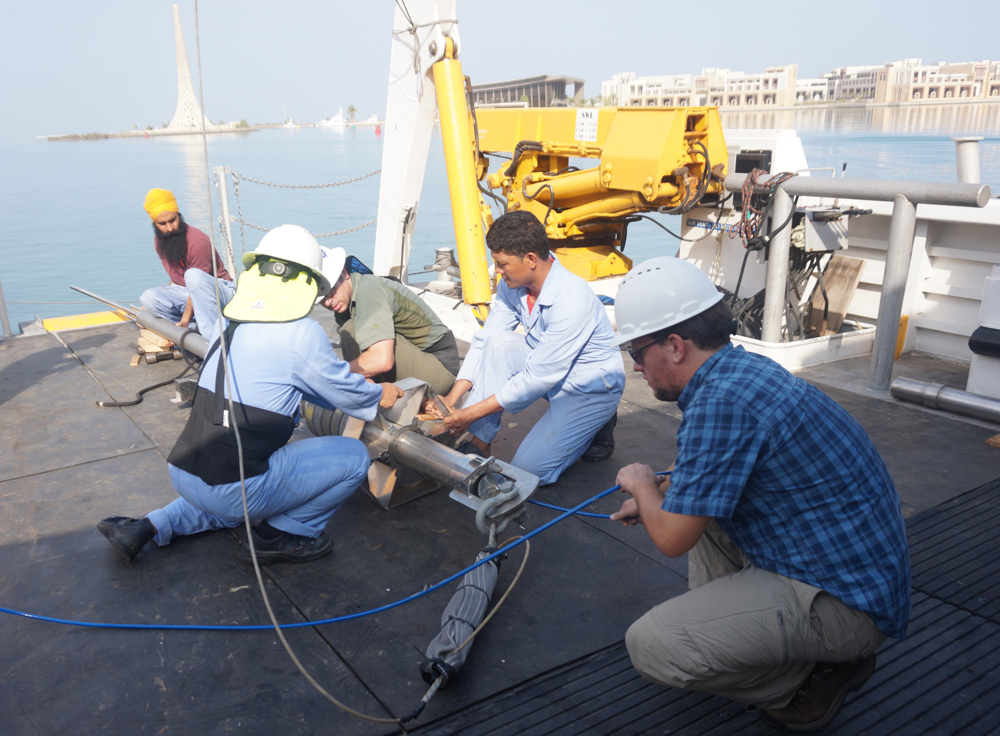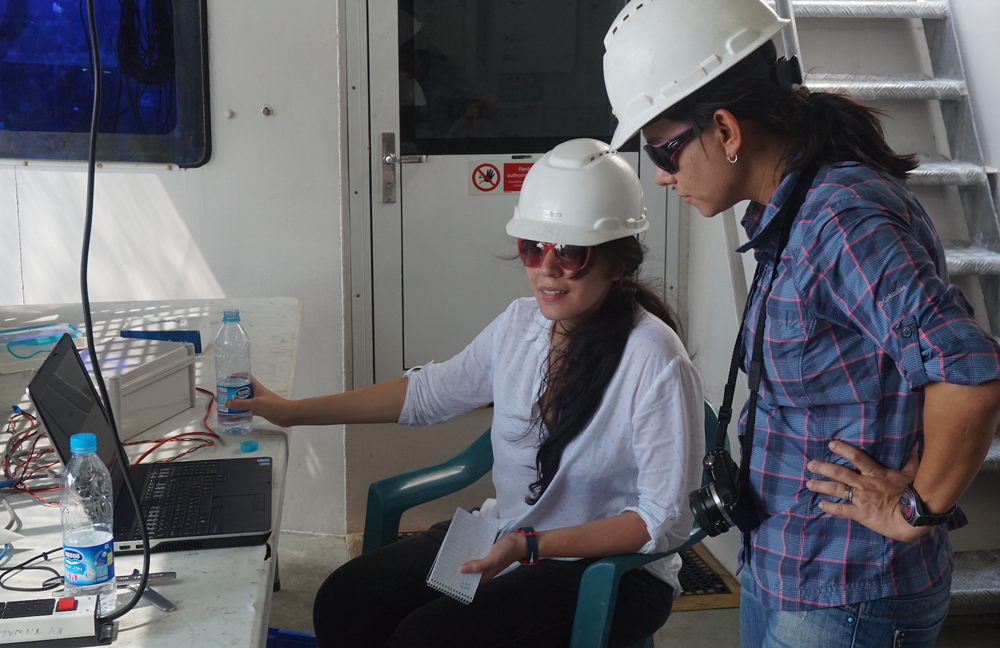.jpg?sfvrsn=39330263_0)
.jpg?sfvrsn=39330263_0)

08 September, 2016

Many, if not most, of the great discoveries in science and engineering at KAUST take place within the university's  unparalleled laboratories. KAUST is known around the world for housing some of the most specialized, sensitive, and groundbreaking analysis and characterization tools, materials science research labs, and ultra-powerful computational machines within its facilities.
unparalleled laboratories. KAUST is known around the world for housing some of the most specialized, sensitive, and groundbreaking analysis and characterization tools, materials science research labs, and ultra-powerful computational machines within its facilities.
But sometimes your investigations lead you into the field.
Recently, members of ANPERC ventured out into the Red Sea to test a new tool—designed and built in-house with the assistance of KAUST's Central Workshops—that aims to provide a set of subsurface sediment analyses that can't be conducted in the lab.
Dr. Marco Terzariol (photo to right, lower right), a post-doctoral research fellow in Prof. Carlos Santamarina's Energy Geo-engineering Lab (EGEL), has invested years designing this in-situ sediment characterization tool. Together with Ph.D. students Marisol Salva, Adrian Garcia, and Visiting Scholar Josbel Cordero, Dr. Terzariol utilized the Coastal & Marine Resources Core Lab's research vessel, R/V Thuwal, to make an initial test of the tool on the floor of the Red Sea.
This characterization tool will enhance the characterization of marine sediments and provide a deeper understanding of their physical and engineering properties. Although geophysicists can gain insights into the earth's subsurface remotely using seismic waves, large-strain mechanical parameters, thermal properties, and hydraulic properties are best gathered at the source.
"This new tool will bring a new dimension in understanding, since it can perform most informative tests without the inherent disturbance of sampling," said Terzariol.
The potential impacts extend to hydrocarbon exploration, as the additional information the tool can gather may provide new insights into the nature of oil seeps and the development of offshore oil and gas reservoirs.

 The results of the team's first test are promising; the tool appears to be functioning as designed, and the team plans one more test run before teaming with the Red Sea Center for an initial utilization in a research project.
The results of the team's first test are promising; the tool appears to be functioning as designed, and the team plans one more test run before teaming with the Red Sea Center for an initial utilization in a research project.
ANPERC congratulates Dr. Terzariol and the EGEL team on this achievement, and is excited about the contributions to subsurface sediment characterization that their work will contribute.